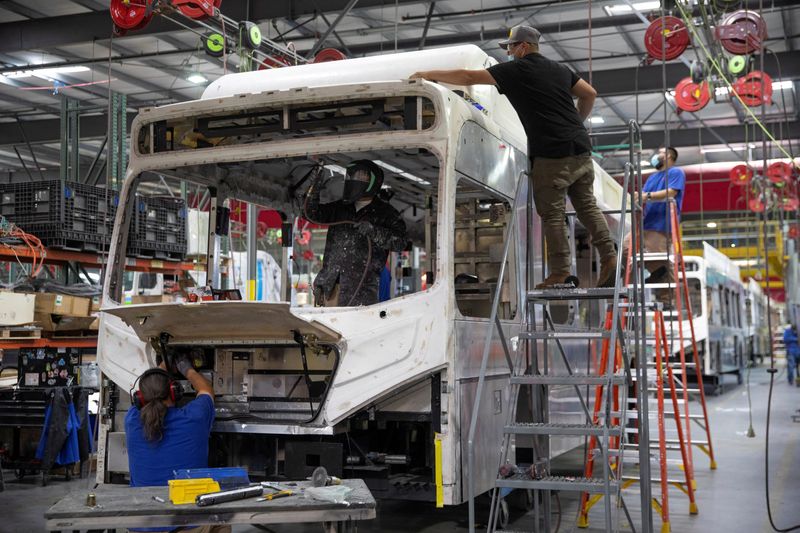U.S. manufacturing output ekes out small gain in August
2022.09.15 10:17
[ad_1]
3/3

© Reuters. FILE PHOTO: Workers build electric buses at the BYD electric bus factory in Lancaster, California, U.S., July 1, 2021. REUTERS/Mike Blake
2/3
WASHINGTON (Reuters) – Production at U.S. factories edged up in August amid a decline at motor vehicle assembly plants, but gains in the output of machinery as well as computer and electronic products pointed to underlying strength in manufacturing.
Manufacturing output gained 0.1% last month after increasing 0.6% in July, the Federal Reserve said on Thursday. Economists polled by Reuters had forecast factory production would be unchanged. Output increased 3.3% compared to August 2021.
Manufacturing, which accounts for 11.9% of the U.S. economy, is slowing as spending shifts back to services from goods.
Higher interest rates as the Fed fights inflation as well as cooling demand overseas and a strong dollar are headwinds for factories.
Production at auto plants dropped 1.4% last month. Auto production surged 3.2% in July, in part boosted by seasonal factors, which were not repeated in August. Excluding motor vehicles, manufacturing gained 0.2%.
Output of long-lasting manufactured goods was unchanged. Gains of at least 1.0% were recorded by makers of machinery, computer and electronic products as well as aerospace and miscellaneous transportation equipment. They were, however, offset by losses of more than 1% reported by producers of wood and furniture products.
Production of nondurable manufactured goods rose 0.2%.
Mining output was unchanged in August after posting five consecutive monthly gains. Utilities production fell 2.3%. As a result, overall industrial production slipped 0.2% in August after increasing 0.5% in July.
Capacity utilization for the manufacturing sector, a measure of how fully firms are using their resources, was unchanged at 79.6% in August. It is 1.4 percentage points above its long-run average. Overall capacity use for the industrial sector fell 0.2 percentage point to 80.0% last month. It is 0.4 percentage point above its 1972-2021 average.
Officials at the Fed tend to look at capacity use measures for signals of how much “slack” remains in the economy – how far growth has room to run before it becomes inflationary.
[ad_2]
Source link








